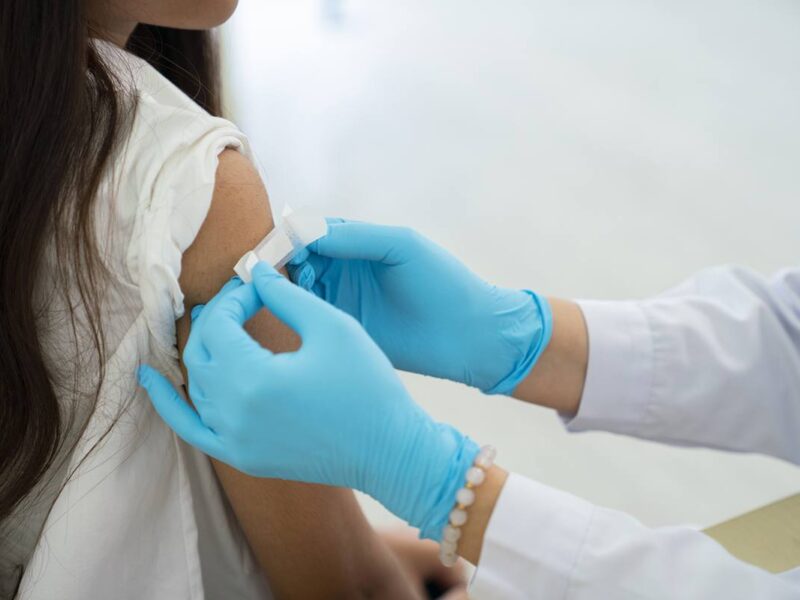Round Two Random Testing Program Results Announced
Results from Round Two of the Random Testing Program at Texas A&M University demonstrated a drop in the overall positivity rate from 3.2 percent to 1.6 percent. The program will continue throughout the semester to help identify transmission hotspots for containing the spread of the virus that causes COVID-19.
Results from the second round of the Random Testing Program are below:
- 9,782 students were invited by email to participate in the Random Testing Program
- 6,902 (71 percent) responded to the invitation email and visited the pre-screening questionnaire
- 5,498 (80 percent of respondents) were considered eligible through the pre-screening process
- 3,436 (62 percent of eligible students) completed the testing program process, i.e. both the questionnaire and the COVID-19 test (laboratory results are available on 3,315 of these students)
Among eligible students who completed the COVID-19 test procedure:
- 53 students (1.6 percent) with available results who took a COVID-19 test as part of this program tested positive
- 0.9 percent of students living in campus housing tested positive
- 2.0 percent of students living off-campus tested positive
- 2.2 percent of students attending all courses remotely tested positive
- 1.4 percent of students attending courses using a combination of remote and in-person interactions tested positive
Results for all testing, including the Random Testing Program, will be posted on the Texas A&M COVID-19 Dashboard*.
Key Findings To Highlight
- SARS-CoV-2 was detected in a smaller fraction of the student population in Round Two compared to Round One.
- There was a dramatic decrease across the board in positivity among younger students.
- Positivity is not higher among students attending in-person classes.
Other Findings From Our Survey
The overall goal of this kind of strategy is to understand population level factors and dynamics of COVID-19 in the community to inform opportunities for broad-scale public health education and other activities. It also serves to provide information about other COVID-19-related factors:
- 81 percent of students attend classes by a combination of remote and in-person learning, while only 19 percent are attending remote lectures only.
- 93 percent of students report they always use face coverings when interacting outside of their homes.
Although this program focuses on testing students who did not seek clinical testing (i.e. students who are asymptomatic or experience only mild symptoms), the research probed students regarding specific COVID-related symptoms. We found that headache (6 percent), sore or scratchy throat (3 percent), runny nose (3 percent), and nasal or sinus congestion (4 percent) were the most frequent. These symptoms were more common among individuals who tested positive for SARS-CoV-2, suggesting that, even if mild, students with these symptoms might benefit from COVID-19 testing in order to understand their infection status.
An added benefit of the program is to identify and inform students who are infected but who may not know it, and all students who test positive are notified of their results and provided clinical and community resources. Students who test positive are moved into isolation, and close contacts are notified through contact tracing efforts at the Texas A&M COVID Operations Center, which provides information and guidance on testing and quarantine.
Random And Adaptive Testing Process
The second iteration of the testing program was conducted the week of Sept. 7. The adaptive strategy of Round Two was informed by the data obtained through the first round of testing, making it possible to strategically test students who might have the highest risk of SARS-CoV-2 exposure. Again, students residing in university-owned housing, as well as those living off-campus and in private residences, were asked to participate, but undergraduate students were the focus of Round 2.
The adaptive approach means that results from each round of testing will inform subsequent testing strategies. Round 3 of the testing program is underway now. In this round, a total of 9,782 students were invited for testing Sept. 22-25.
The testing program will continue in this fashion as we continue to track and monitor SARS-CoV-2 among our community. Because a negative test today does not ensure that future exposures will not occur, students will receive multiple invitations to participate in this testing program.
President Michael K. Young offered the following:
“We are very proud of where we are six weeks into the semester. These results demonstrate the importance of the hard work and selfless service by our researchers, faculty, staff and especially our students,” Young said. “We will remain vigilant in our strategies to combat COVID-19 and to give our students the best college experience possible.”
* This link is no longer active and has been removed.
Media contact: Kelly Brown, kelly.brown@tamu.edu





